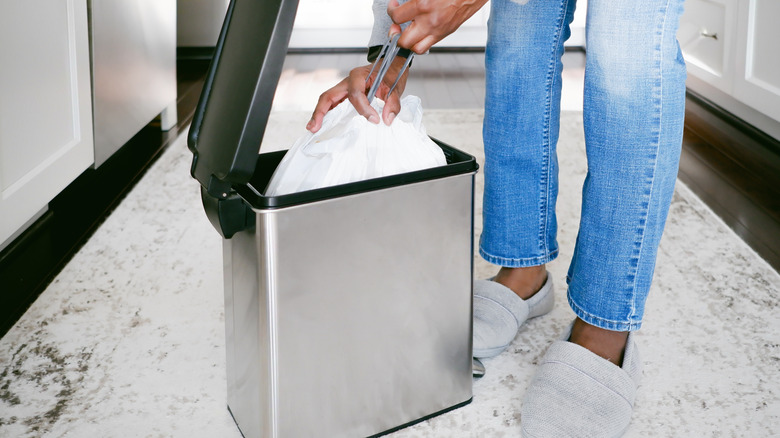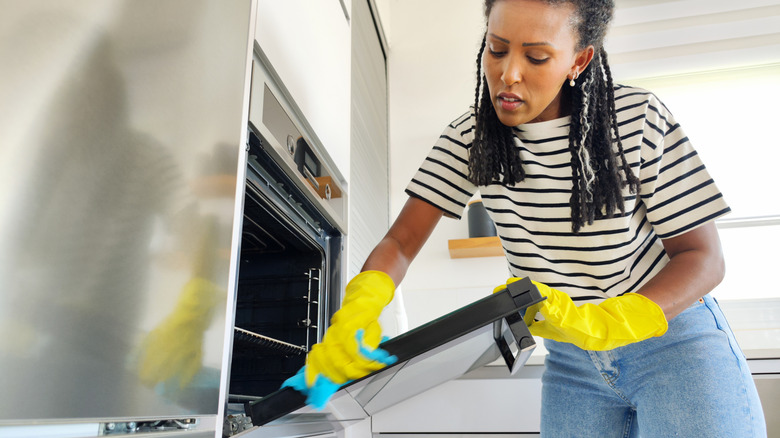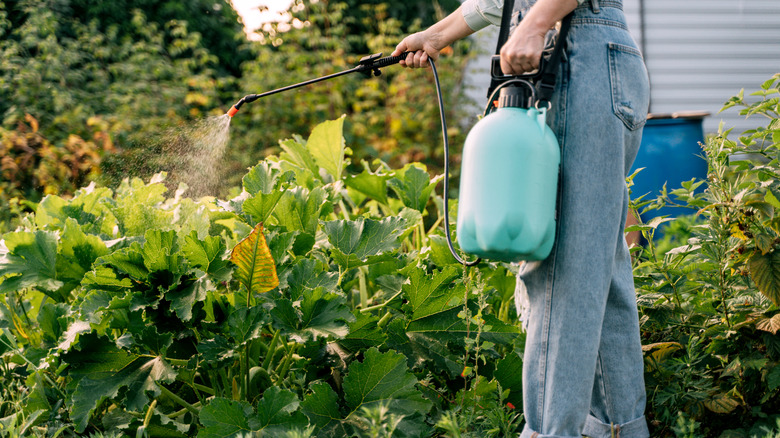Common Household Items That Are Actually Hazardous Waste (& How To Get Rid Of Them Safely)
Did you know hazardous waste could be lurking in your home? Many cleaners, gadgets, and products designed to make your life easier and solve common problems could be toxic or even classified as hazardous waste, particularly if they're flammable, corrosive, reactive, hazardous to the environment, or serve as an irritant. In fact, there are many common items you should avoid putting in your trash can because of their potentially dangerous effects on humans, animals, and the environment. Find out how to get rid of oven cleaners, items containing mercury, and pesticides.
Proper disposal often requires you to use special hazardous waste programs to keep the harmful components out of the regular trash stream. Disposal options for toxic or hazardous household materials often vary based on where you live and what types of waste services you have in the area. Some municipalities offer year-round hazardous waste disposal, while others host special events periodically.
Dispose of oven cleaner at special facilities
If cleaning your oven is on your to-do list, you might use commercial oven cleaners to make the job easier. However, they contain caustic chemicals, which can burn your skin, eyes, and digestive tract upon exposure, as well as cause respiratory issues. While local regulations may vary, you can often throw a completely empty oven cleaner container away in the trash. However, disposing of a package that still contains oven cleaner usually requires you to treat it as hazardous waste with disposal through a local household waste program. The EPA provides a list of hazardous waste programs in each state to help you locate a nearby option that accepts oven cleaners and similar dangerous wastes.
Oven cleaners may have different hazardous or toxic ingredients, including butane, monoethanolamine, and sodium hydroxide (aka lye). If your oven cleaner contains sodium hydroxide, the only safe way to dispose of it is at a year-round hazardous waste collection site or a special hazardous waste collection event. Avoid throwing the cleaner in the trash or pouring it down a drain. The exception is oven cleaning products without sodium hydroxide. If you need to dispose of a small amount of lye-free oven cleaner, you can pour it down a drain if you follow it with water to dilute the chemicals.
Safely prepare household items containing mercury
Many common items in your home could contain small amounts of mercury — an element that evaporates and releases toxic vapors. Most consumer products are no longer allowed to contain mercury, but you could have older thermometers, thermostats, blood pressure cuffs, and other items that contain it. Fluorescent light bulbs, including compact fluorescent lamps (CFLs), contain small amounts of mercury. They're safe while intact, but the mercury can cause issues if these items break, so you may want to get rid of them as a precaution. Mercury is also harmful to wildlife, so properly disposing of these items is important.
If you want to remove objects containing mercury from your home, treat them as hazardous waste, as they aren't allowed in landfills. You'll need to take them to a hazardous waste collection site that accepts items with mercury in them. Before transporting the item, put it in a plastic bag or container that seals tightly. This helps contain the mercury if the item breaks. Then, label the outer package as "mercury waste," so anyone who comes into contact with it is aware of the contents. You might also place the secured item in a box with padding while transporting it to prevent breakage.
The Earth911 recycling search tool helps you locate nearby recycling programs for all types of hazardous waste, including mercury. You can also find mail-in programs for fluorescent light bulbs. Waste Management offers recycling kits that you can purchase for CFLs and fluorescent tube lights. WasteSecure offers a larger range of container types that allow you to mail mercury-containing items for recycling and proper disposal.
Use a hazardous waste program for pesticides
Chemicals may be an important part of your integrated pest management approach to keep your lawn and garden beautiful. Pesticide is a broad term covering a range of chemical products that kill or control specific pests. Examples include fungicides, herbicides, insecticides, and rodenticides, each using different chemicals to target specific pests. However, those chemicals are also toxic or hazardous to other animals, humans, and plants, which is why proper disposal is necessary when you have leftover pesticides.
Start by checking the label of your specific pesticide product, which should list storage and disposal instructions. If you have a completely empty pesticide container, you can triple-wash it and throw it in the regular trash. Triple washing requires you to fill the container a quarter of the way with water and shake it with the lid securely in place. Complete this process three times. The rinse water should be used where the pesticide was intended and not simply dumped down the drain or on the ground. If you have pesticides left over that you won't use, household hazardous waste programs typically accept pesticides. Use the original container to transport the chemicals and place it inside a plastic bin in case of spills.
Dumping excess pesticides down the drain isn't an option since treatment facilities often can't remove pesticides from wastewater adequately. The chemicals could end up in the local water supply, causing damage to or killing any living organisms in the water. While using pesticides on your lawn according to the instructions can be done safely, it's not safe to pour the excess chemicals anywhere on your property.



